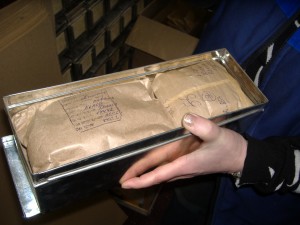The post I did yesterday about a small chunk of prairie still to be found in Calvary Cemetery, within the confines of metropolitan St Louis, ((Ah, but is it a remnant? Check out the comments on the original Economist piece.)) prompted Jeremy to tell me about his own favorite prairie remnant.
That would be the one inside the accelerator ring at Fermilab near Batavia, Illinois. Where they do indeed have a herd of bison contributing to the management of the ecosystem, as I — facetiously, I thought — suggested they should in St Louis. Too bad the beasts can’t be seen on Google Earth.
It looks like the Fermilab prairie is used as a resource by local schools, which seems like a great idea. I don’t know whether the teachers make anything in particular of the fact that at least one crop wild relative is to be found at the site. Helianthus mollis is not what I would call a star among crop wild relatives. For a start, it’s pretty difficult to cross with domesticated sunflower. And I don’t think it’s endangered or anything (or not yet). But it could be useful in illustrating to school kids an ecosystem service that is often overlooked — provision of genetic diversity for crop improvement.
Another thing it may well help illustrate is climate change. It looks like there’s really detailed data on many species, and it will be interesting to see what will happen — is already happening? — to their abundance and distribution. Maybe H. mollis will disappear from the Fermilab prairie in due course. Will it be able to go elsewhere? Or will we need to manage its relocation? To Canada…?
